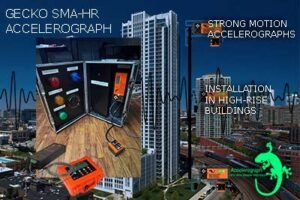Call us now at: (02) 8404 0740 | Bulacan Landline (044) 813 7633 | Jelly 0977 803 5308 | Lena 0920 985 4030 | Kris 0956 763 2457 | Bea 0919 227 9784 | John 0938 432 8515





PhilGeps accredited and known for our top-quality auxiliary

Our expert technical team is ready to offer both remote and on-site support

Our accelerographs fully adhere to DPWH’s regulations on earthquake recording instrumentation for buildings

Designed in Japan and rigorously tested by top-quality manufacturers globally, guaranteeing unmatched excellence
Our full-service approach covers every aspect, from design and supply to seamless installation and ongoing maintenance, ensuring your well-being throughout the entire process
VastResult Inc. is a leading provider of earthquake magnitude detection and monitoring solutions in the Philippines. Offering a full range of services, from designing and supplying the equipment to installing and maintaining it. Our solutions are used to protect a wide range of infrastructure, ensuring that it is safe and can withstand earthquakes.
Our advanced technology provides accurate evaluations of building structural health, from smaller buildings, building facilities to towering skyscrapers. With our team of expert technicians, we’re committed to delivering innovative and reliable systems that meet the specific needs of your earthquake monitoring system.
Can’t decide? Let us help you make up your mind
Our seismic accelerograph was successfully deployed and installed across various sectors, including department stores, manufacturing building, industrial facilities, and hospitals. Our expertise ensures reliable seismic monitoring tailored to diverse industry needs.
Partnering with high-precision brands adhering to international standards of quality and reliability
Offering a diverse selection of seismic accelerographs sourced from top manufacturers in Japan, Korea, and Australia. Our products deliver high-precision data on building management systems behavior during seismic events, ensuring safety and integrity.
Our strong motion accelerograph fully aligns with DPWH IRR Memorandum standards for modern digital seismic accelerographs, ensuring strict compliance and reliability to monitor earthquake activity.
Empowering safety, safeguarding assets, and restoring order in the face of earthquake emergencies
Seismic Accelerographs provide continuous monitoring and recording of ground movements and vibrations. This real-time data aids building authorities in several crucial ways:
To learn more about Seismic Accelerograph, Contact Us.
Our accelerograph brands offer integration with various building safety, security, and management systems, enabling automatic safety protocols during magnitude levels of seismic events.


The availability of seismic accelerograph within building and other structures is important for seismic motion detection to ensure the structural health of a building with compliance to the DPWH requirement and regulations.
Our full-service approach covers every aspect, from design and supply to seamless installation and ongoing maintenance, ensuring your peace of mind throughout the entire process
If you’re seeking an earthquake recording instrument that adheres to DPWH guidelines, we have the perfect solution for your needs. Reach out to us anytime, and we’ll be ready to assist you promptly.
Interested in our services and products?
Earthquake Recording Instrumentation that provides real-time data on ground movement, essential for the structural health monitoring of buildings
A seismic accelerograph is a tool that tracks and logs the speed at which the ground moves during earthquakes and other seismic activity. It has a sensor that detects ground movement and a recorder that stores this information. These devices are crucial in seismology and structural engineering. They collect data on the severity and length of ground shaking, which is essential for determining seismic risks and creating buildings that can withstand earthquakes.
This seismic monitoring device offers seamless integration with various building security systems, including Fire Detection and Alarm Systems (FDAS), as well as Public Address (PA) systems. In the event of an earthquake, it can activate alarms and broadcast notifications to alert people within the building. The system can connect to a building’s BMS, enabling it to take automatic safety measures. For example, it can shut off power lines, gas lines, and elevators to reduce risks. It can also control access to secure areas, keeping occupants safe during earthquakes. This integration protects lives and reduces damage caused by seismic events.
Fortify your building’s structural health with an Earthquake Recording Instrument
Prioritizing disaster preparedness is essential for safeguarding lives and mitigating economic losses.
Due to the Philippines’ susceptibility to natural disasters, particularly earthquakes, the government has introduced additional security measures mandating the inclusion of accelerographs alongside FDAS and CCTV systems for businesses with buildings reaching at least 50 meters in height, as a prerequisite for obtaining a business permit.
Our Seismic Accelerograph excels as a self-contained solution that combines earthquake sensing and monitoring capabilities. It operates independently, eliminating the need for external monitoring systems or cables that are prone to failure during seismic events. This standalone design ensures reliable data collection and analysis even when severe earthquakes disrupt infrastructure.
Our Seismic accelerograph excels in reliability during natural disasters with several key features:
(Learn more about basic but important information about Seismic Accelerograph)

The government required the installation of seismic monitoring technology to save lives and prevent financial harm. Accelerograph devices must be installed in structures taller than 50 meters, including government buildings, airports, condos, hotels, malls, warehouses, hospitals, schools, libraries, and others. Hospital buildings having at least three storeys or higher and a minimum bed capacity of fifty. School buildings that are at least three stories tall and include at least twenty classrooms. Commercial or high-rise buildings having a minimum capacity of 1000 people. Industrial buildings having a minimum capacity of 1000 people are also required for an installation of seismic accelerographs.
A seismograph is a generic term used to describe a recording device that detects ground motion due to earthquake. Typically this will comprise a recorder and a seismometer, which is a sensor that detects the velocity of the ground. An accelerograph is recorder that uses an accelerometer, which as you can tell from the name detects the acceleration of the ground. An accelerometer is a sensor that measures acceleration, like a speedometer measures speed. An accelerometer is often part of an accelerograph, an instrument that contains accelerometers and records the acceleration.
During earthquakes and seismic events, accelerographs are key instruments installed in buildings to accurately gauge the forces acting on them. These devices record acceleration data, which is crucial for professionals to understand how structures withstand seismic stresses. By analyzing this data, engineers and seismologists can determine a building’s performance, estimate possible damage, and make improvements to designs to increase earthquake resistance and ensure public safety.
Accelerographs are devices that capture, and archive data associated with earthquakes. They typically store this information within their internal recording systems, which may include:
By recording and storing these types of information, accelerographs provide a comprehensive record of seismic events and their effects, which is invaluable for earthquake engineering, research, and disaster mitigation efforts.
The following are the ideal locations for seismic equipment installation, which is where strong-motion accelerograph instruments should be installed, so that they can capture correct information during earthquake events: Ground Floor, Lower Basement (if applicable), Mid-Level Floor, and lastly is the floor near the top of the building. Installing or mounting the item with protected storage requires appropriate room and securing it in an unobstructed location.
Accelerographs play a vital role in promoting a building’s structural integrity during seismic events by providing valuable data that engineers and designers use to enhance seismic resilience. Here’s how accelerographs contribute to this goal:
Overall, accelerographs play a crucial role in promoting a building’s structural integrity during seismic events by providing essential data for structural assessment, performance evaluation, retrofitting strategies, code compliance, and research efforts aimed at enhancing seismic resilience.

Get a FREE Consultation
Schedule a session with our experts and receive a complimentary business analysis report.
We aim to help every business maximize their full potential without spending much money and effort in their business operations. We are here to assist you even if you’re in different parts of the world.

Tags:
FREE SITE VISIT within Bulacan!!

“Unlocking Precision in Safety Monitoring: With Seismic Accelerograph, Harness the Power to Safeguard Lives by Capturing and Analyzing Earth’s Rhythms.”
© 2024 All Rights Reserved. SeismicAccelerograph Inc. by VastResult Inc.